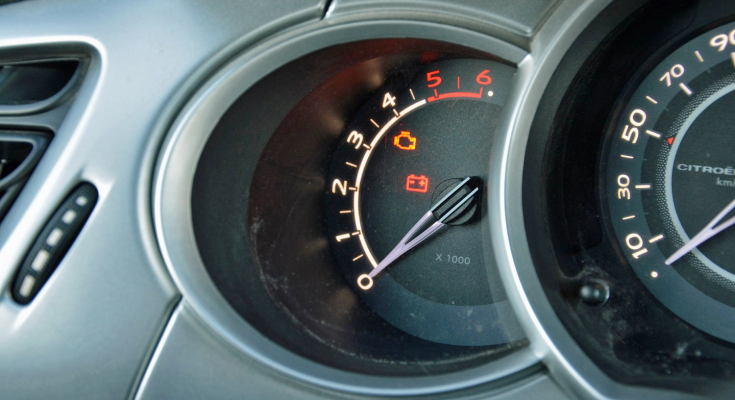Post Preview
Understanding the Check Engine Light
The check engine light is one of the most prominent warnings that your vehicle communicates, but many drivers underestimate its importance or hope it will go away on its own. When this light appears on your dashboard, it means your car’s engine management system has detected a problem that could be affecting its efficiency, safety, or emissions system. While some issues could be minor, persistent illumination often signals that something needs immediate attention.
The check engine light is common among many makes and models, but certain brands are known for specific recurring issues that trigger this warning. For instance, owners dealing with Nissan Infiniti problems often encounter check engine light warnings due to transmission or sensor failures. Whether you drive a Nissan or any other car, understanding this warning is critical for preventing more expensive repairs down the road.
Common Causes for a Persistent Check Engine Light
- Loose or Faulty Gas Cap: If the gas cap is not properly closed or is damaged, fuel vapors can leak out, which is promptly detected by your car’s emission system. This is one of the simplest issues to address and fix.
- Malfunctioning Oxygen Sensors: Oxygen sensors measure unburned oxygen in the exhaust stream. A failing sensor may not deliver accurate data to the engine’s computer, causing the check engine light to illuminate and the car’s performance to decrease. It can also result in poor fuel economy.
- Failing Catalytic Converter: This vital emissions component breaks down toxic gases before they leave your car’s exhaust. A failing catalytic converter can impact both performance and emissions levels. It’s an expensive repair, but it is commonly triggered by underlying issues such as a misfiring engine.
- Worn Spark Plugs or Ignition Coils: These parts are essential for proper ignition in each engine cylinder. Over time, they wear out, causing engine misfires, rough idling, and difficult starts.
- Mass Airflow Sensor Issues: The mass airflow sensor monitors the air entering your engine and helps adjust the air-fuel mixture. Problems with this sensor affect overall engine performance and efficiency.
Potential Consequences of Ignoring the Check Engine Light
Ignoring a persistent check engine light can lead to a cascade of avoidable problems. The risks of overlooking this warning are significant:
- Reduced Fuel Efficiency: An inefficient engine will burn more fuel and reduce your miles per gallon, meaning more frequent stops at the gas station and higher ongoing costs.
- Increased Emissions: A malfunctioning engine or emission control component can cause your vehicle to emit more smog-forming pollutants, contributing to local environmental concerns and the risk of failing state emissions tests.
- Costly Repairs: A seemingly small issue can rapidly escalate, leaving you with major engine or transmission problems far more expensive to repair than the initial cause.
Steps to Take When the Check Engine Light Comes On
- Check the Gas Cap: This is the quickest potential fix. Tighten the cap and see if the light turns off after several drives. Replace the cap if it’s cracked or broken.
- Observe Vehicle Performance: Listen and feel for any changes in how your car drives. Hesitation, stalling, or rough idling can indicate more serious problems that need immediate attention.
- Use an OBD-II Scanner: Onboard diagnostics (OBD-II) scanners are readily available at auto parts stores and can be plugged into most vehicles manufactured after 1996. They provide diagnostic trouble codes (DTCs) that clue you into potential issues. Many auto parts stores will scan your car for free.
- Consult a Professional Mechanic: If unsure or the codes point to a more complicated problem, take your vehicle to a professional for diagnosis and repair. Ignoring important repair work can only worsen the issue.
Debunking Common Myths About the Check Engine Light
- It’s Always a Major Problem: Sometimes, a loose gas cap or worn sensor is all it takes to trigger the warning. Don’t assume the worst, but don’t ignore the signal either.
- Disconnecting the Battery Will Reset It: While disconnecting the battery may temporarily turn off the warning, the underlying problem will remain. The light will almost always return because the system has not been repaired.
- If the Car Runs Fine, it’s Okay to ignore: Even if your vehicle’s performance doesn’t seem affected, hidden engine or emissions issues can become costly if left unaddressed. These issues may also worsen over time.
Preventive Measures to Avoid Check Engine Light Issues
Prevention is the best defense against annoying and worrisome check engine light triggers. Regular maintenance should include:
- Timely oil changes to keep vital engine parts lubricated and clean
- Replacing air filters and fuel filters as recommended in your owner’s manual
- Inspecting and changing spark plugs and wires before they wear out
- Having key sensors and emission components checked and replaced as needed
These steps help ensure your vehicle’s health and prolong its life.
read more : https://aio-technical.com/
When to Seek Professional Help
If your check engine light remains on despite following basic troubleshooting steps—or if you notice unusual engine sounds, excessive smoke, harsh gear changes, or a noticeable decrease in performance—bring your vehicle to a qualified mechanic. Timely professional diagnosis and repairs can save you money and give you peace of mind, ensuring your car continues to operate efficiently and reliably.
Conclusion
The check engine light is designed to protect your car, your wallet, and even the environment. Addressing it promptly prevents minor problems from turning into major, costly repairs and helps you stay road-ready and stress-free. Taking your car’s warnings seriously ensures reliability and saves you more than just money in the long run.



